New lease on life for ancient buildings
By He Na and Hu Meidong ( China Daily ) Updated: 2013-08-12 07:17:05
|
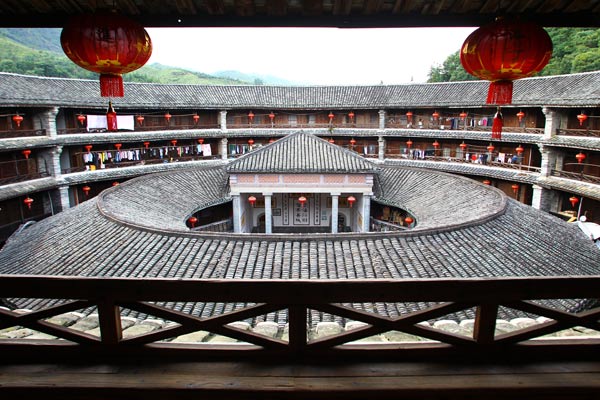 |
|
Inside the centuries-old Zhencheng Lou, one of the oldest buildings in the area. |
|
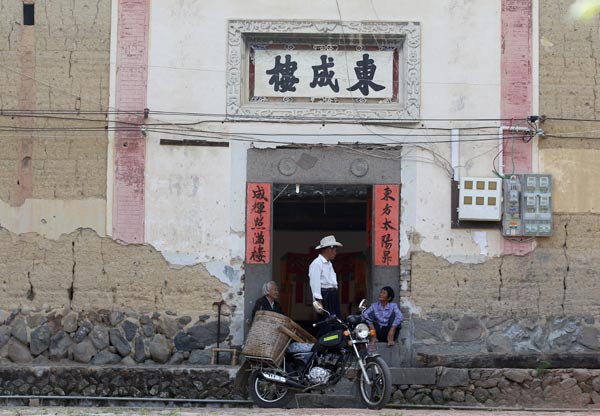 |
| Residents of Dongcheng Lou sit at the entrance of the building. |
"The buildings are mainly four or five stories high. The first floor serves as the kitchen, the second is used for grain storage and the upper floors act as living areas," Xu said. "Because of their defensive function, only rooms on the third floor and higher have windows - and they are very small. With enough food, the residents could survive a long time under attack."
|
Related Readings A trip back in time In addition to the 46 tulou included on the World Heritage List, some 23,000 are strewn across a wide area in the vast mountainous regions of Yongding. Zhongchuan village in Xiayang town is one of these outposts, but it's nowhere near as famous as the Hongkeng and Chuxi clusters. The relatively low number of tourists means the village has retained many original features, which gives visitors the feeling they've traveled back to ancient times. The narrow, winding alleys are full of surprises. The village is divided by a shallow river, and the dogs that lie on the narrow bridges crossing the watercourse and bask in the sun show no fear of humans. Although one large tulou has been renovated to serve as a hotel, the others are still inhabited by local people, mainly the elderly. One of the most outstanding is Fuzi Lou, one of the few tulou designed and constructed as a Chinese character. Looking down on the structure one can discern the character fu, which means "blessing". Zhongchuan is also one of the famous points of departure for Chinese from Fujian province. The village has a population of 2,545, but some 15,000 Chinese who live overseas have their ancestral homes in the village. - He Na A work of art with a soul Even though he's an expert in tulou building, Xu Songsheng, 61, hasn't constructed a new building since 2002. Xu was born and grew up in Jiqing Lou, the oldest tulou in Fujian province. His father was an outstanding tulou designer, and Xu began following in his footsteps at age 14. To Xu, a tulou is not just a clay building, but a work of art with a soul. "Many visitors are extremely fond of circular tulou, but the shape is dictated by the site," Xu said. "The circular ones are generally built on large flat blocks, while the rectangular ones are built on mountain slopes." Xu said the foundations are the most important part of the construction. "The foundations of a tulou are laid with dry stones to avoid even the smallest cracks. For a medium-sized structure with 30 to 40 living rooms, the foundation work can take a year. The techniques can only be learned with time, patience and practice." Xu owns a construction company, and is reasonably wealthy. His only real concern in life is that tulou building skills may be lost in the future. He hired a number of apprentices, but demand for tulou is so small that they've all turned to modern construction work instead. "With good maintenance, I think the tulou can survive for several hundred more years," Xu said. "To protect this heritage, each of us could be given 10,000 yuan ($1,633) a year as a subsidy. I hope the government can work out a way to help me pass on my skills." - He Na and Sun Li Getting in on the act With visitor numbers rising every year, Yongding county has seen a surge in revenue from tourism. However, Mao Gaoliang, Party secretary of Yongding, is still not satisfied and he's troubled by missed opportunities. "Because of a shortage of other facilities and nice hotels, most tour groups stay in our county for just a few hours," he said. "They only visit the tulou near the entrance of the resort and don't stay or even eat here." He said income from ticket sales is so low that it's hard to raise local people's incomes. So, to expand local tourism, generate jobs and allow visitors to fully experience tulou life and culture, the county plans to combine culture with tourism by encouraging companies to film movies and episodes of well-known TV shows in the area. "We plan to stage tulou-themed outdoor performances with large casts, mainly local farmers, on May 1, next year," Mao explained. "We will speed up construction of the facilities and a number of tourist projects, such as a hot-spring holiday village, an ancient Hakka town, a Nanshan holiday district, and a movie and TV production base, are being built. Mao is confident that once these projects are put into operation, Yongding will become a modern tourist resort that will easily cater to the demands of different consumer groups. Visitors will be encouraged to stay in the area for three or four days. "Those who have visited Yongding before will be surprised by the changes," he said. - He Na and Sun Li
|
With their unique appearance, architectural techniques and group lifestyles, the tulou have gradually attracted global attention. In 2008, UNESCO put 46 on its World Heritage List.
The sudden fame changed Yongding county and the lives of the residents.
Roads and other infrastructure were built to make the tulou more accessible, leading to an influx of visitors.
"Tourism changed our village, and most of the residents now work in tourism-related businesses, such as running home inns, restaurants, selling local products or souvenirs, or working as tour guides. There are more than 100 cars in our village," Lin said. "One in four families owns one."
In 2008, Lin Bingxiang, 32, the fourth-generation owner of Yucheng Lou, quit his job at a large logistics company in Xiamen and returned home. He poured all the money he had earned during the previous few years into opening a restaurant and turning his tulou into a small home inn.
The 153-year-old Yucheng Lou was once home to 600 people, but now two large families comprising around 20 people live there.
"If I hadn't quit, I might be a manager in the company now," said Lin Bingxiang. "But I don't regret it at all because I have a very good business here and, more important, I can live with my parents. It's my ideal life."
Jiang Jaolin, 29, a resident of Hongkeng village who once worked as an accountant in Xiamen, also returned and now works as a tour guide.
"I can make a living from home and take care of my little son during work breaks," Jiang said. "We can sell all the things we grow, even the pickles my mother makes. Life is much easier than before, and I enjoy a better environment."
Most tourists arrive in the morning and leave before 3 pm. Those seeking a little peace and quiet stay overnight, and are usually polite and thoughtful.
"To tell you the truth, our life isn't disturbed too much," Jiang said.
Former president Hu Jintao visited Zhencheng Lou during the 2010 Spring Festival and commented that the Fujian tulou are not only a World Heritage Site, but also a treasure of traditional Chinese culture.
Hu's visit triggered a tourism boom in Yongding and tourist numbers have increased sharply since.
Lucy Ullrich, an urban designer for Tauranga City Council in New Zealand, is one of them.
Ullrich saw photographs of the tulou in a magazine several years ago and never forgot the fascinating images, so when she was invited to join a conference in Shanghai, she saw a chance to visit.
Instead of staying in hotels, she chose tulou accommodation, which cost about 100 yuan ($16) a night, and spent most of the time observing the lives of the local people and chatting with the people in broken Chinese.
"Although the sun was scorching outside, I didn't need to turn on the fans to keep cool in the room," she said. "The design is perfect for saving energy and making people comfortable. I may incorporate some tulou factors in my future designs. The nights here are so quiet and the local people are very friendly. I'll bring my family next time."
More than 4 million tourists from China and overseas visited the county in 2012, a year-on-year increase of 17 percent, and the revenue from tourism soared to 2.85 billion yuan, according to Yongding County Tourism Bureau.
Protecting the past
To keep his tulou in prime condition, Lin Qinsheng, the owner of Fuyu Lou, has rented out rooms for the past eight years, charging 500 yuan a month for each room.
"The tulou can survive hundreds of years if people live in them," he said. "Otherwise, they are quickly ruined by insects and lack of maintenance."
Protection is always on the top of the agenda for local governments trying to develop the potential of these astonishing structures.
"To protect the tulou properly we founded the first county-level cultural relics bureau in Fujian to improve the protection work and draw up a five-year maintenance plan," said Mao Gaoliang, Party secretary of Yongding county.
No buildings can be constructed on a site once it has gained world heritage status, so the county has bought a series of facilities outside the village and offers lower rents to encourage local people to move their businesses out of the heritage site.
Lin Rigeng is the best-known guide in Yongding and has seen great benefits from tulou-based tourism. The increasing importance of Zhencheng Lou has given him plenty of chances to act as a guide for government officials, foreign dignitaries, and famous actors and singers, as evidenced by the photos that cover almost half a wall of one of his rooms.
"Without tourism, my family wouldn't have such a good life and the young people wouldn't return. Even my son quit his job as a teacher and brought his family back to help me manage the business," he said. "I am a third-generation tulou owner and I'm protecting our heritage so that more people will have the chance to see the architectural treasures of the Hakka people."
Sun Li contributed to this story.
|
|
|
|
|
|
|
|
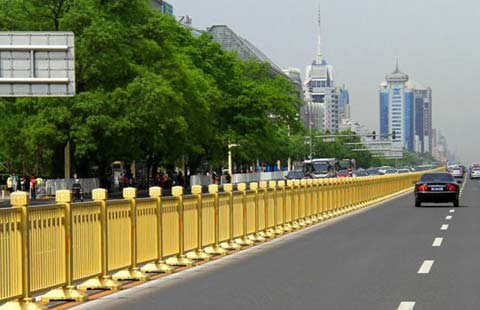


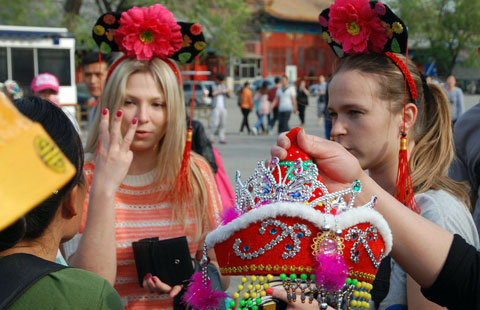

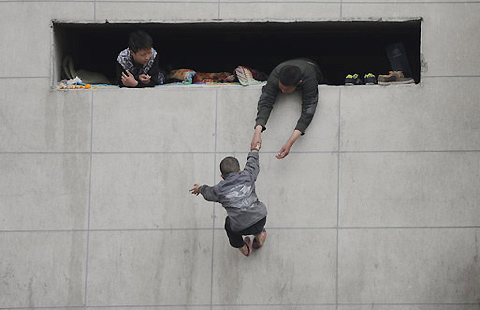

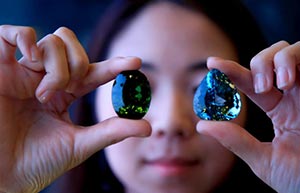
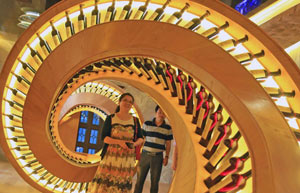

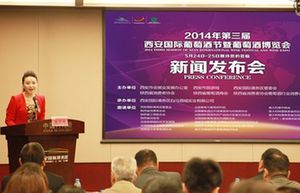



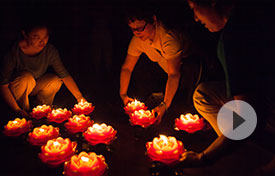



 Op Rana
Op Rana Berlin Fang
Berlin Fang Zhu Yuan
Zhu Yuan Huang Xiangyang
Huang Xiangyang Chen Weihua
Chen Weihua Liu Shinan
Liu Shinan